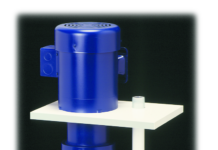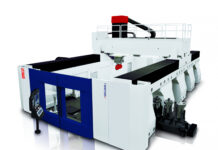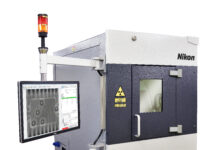
In the evolving landscape of industrial automation, Automated Storage and Retrieval Systems (ASRS) have become a cornerstone technology for optimizing inventory management. Particularly within the context of Just-in-Time (JIT) inventory strategies, ASRS plays a pivotal role in ensuring efficient, timely, and precise storage and retrieval of materials. JIT inventory management aims to reduce waste and enhance efficiency by aligning inventory levels closely with production needs, receiving goods only as they are required. The integration of ASRS into JIT strategies not only enhances operational efficiency but also minimizes costs and errors, making it an essential component of modern manufacturing warehouses.
Understanding ASRS Technology
Automated Storage and Retrieval Systems are sophisticated, high-density warehouse solutions designed to automate the handling of inventory. These systems consist of several key components, including storage racks, retrieval machines (such as cranes or shuttles), and a warehouse control system. There are various types of ASRS, each suited to different warehouse requirements and product sizes:
- Unit-Load ASRS: Designed for handling large items or pallet-sized loads.
- Mini-Load ASRS: Suitable for smaller items, typically stored in totes or bins.
- Micro-Load ASRS: Used for handling very small items, often integrated into parts-picking operations.
- Carousel-Based ASRS: Utilizes rotating shelves to deliver items to a picking station.
The integration of advanced robotics, sensors, and control software allows these systems to operate with minimal human intervention, ensuring precision and reliability in inventory handling.
Role of ASRS in JIT Inventory Management
The implementation of ASRS is crucial for the effective execution of JIT inventory management in manufacturing warehouses. By automating the storage and retrieval processes, ASRS ensures that materials are available exactly when needed, thus synchronizing seamlessly with production schedules. This real-time capability eliminates delays and reduces the necessity for large inventory buffers, which is a fundamental aspect of JIT principles. ASRS can swiftly and accurately store incoming materials and retrieve them for production, maintaining a continuous flow of inventory that supports ongoing manufacturing processes.
Benefits of Using ASRS for JIT Management
The adoption of ASRS within JIT inventory management brings several substantial benefits:
- Increased Efficiency and Reduced Lead Times: ASRS systems significantly speed up storage and retrieval processes, thereby reducing lead times and ensuring materials are available for production without delay.
- Minimization of Inventory Holding Costs: By closely aligning inventory levels with production needs, ASRS helps minimize costs associated with holding excess inventory, such as storage costs, insurance, and obsolescence.
- Enhanced Accuracy in Inventory Tracking and Movement: ASRS provides precise tracking of inventory locations and movements, reducing errors and ensuring the right materials are available at the right time.
- Flexibility in Adapting to Changing Production Demands: ASRS can be easily reconfigured to adapt to changing production schedules and inventory requirements, providing the flexibility needed in dynamic manufacturing environments.
- Reduction in Labor Costs and Human Error: Automation reduces reliance on manual labor for storage and retrieval tasks, lowering labor costs and minimizing the risk of human errors.
Implementation Challenges
Despite its advantages, implementing ASRS in JIT inventory management does present certain challenges:
- High Initial Investment and Cost Considerations: The initial cost of purchasing and installing ASRS can be substantial, requiring careful financial planning and justification.
- Integration with Existing Warehouse Management and ERP Systems: Successful implementation requires seamless integration with existing warehouse management systems (WMS) and enterprise resource planning (ERP) systems to ensure smooth operations.
- Training and Adaptation of Workforce: Employees need to be trained to work with the new automated systems, which can involve a learning curve and adaptation period.
- Maintenance and Operational Downtime: Regular maintenance is crucial to keep ASRS running smoothly, and any downtime can disrupt the JIT inventory flow, impacting production.
Technological Innovations Enhancing ASRS
Ongoing technological advancements continue to enhance the capabilities of ASRS, making them even more valuable for JIT inventory management:
- Advances in Robotics and Automation: Improvements in robotic technology and automation have increased the speed, precision, and reliability of ASRS, enabling faster and more accurate inventory handling.
- Integration with IoT and Real-Time Data Analytics: The integration of Internet of Things (IoT) devices and real-time data analytics allows for better monitoring, control, and optimization of ASRS operations, improving efficiency and reducing downtime.
- Development of More Robust and Scalable Systems: New ASRS designs are more robust and scalable, allowing them to handle a wider range of products and adapt to growing warehouse needs.
- Use of AI and Machine Learning for Predictive Maintenance and Optimization: AI and machine learning algorithms are being used to predict maintenance needs and optimize ASRS performance, reducing downtime and extending the lifespan of the systems.
Case Studies of ASRS in JIT Inventory Management
In a global marketplace where efficiency and precision are paramount, many manufacturing companies have successfully implemented ASRS to enhance their JIT inventory management processes. While we won’t dive into specific case studies, it’s worth noting that companies across various sectors, including automotive, electronics, and consumer goods, have reported significant improvements in operational efficiency, cost savings, and product quality through the integration of ASRS. These real-world applications underscore the transformative potential of ASRS in modern warehouse and supply chain management.
Future Trends and Outlook
The future of ASRS in JIT inventory management looks promising, with several trends and innovations on the horizon:
- Emerging Technologies in ASRS Development: Continued advancements in robotics, AI, and IoT are expected to further enhance the capabilities and efficiency of ASRS, making them even more integral to JIT inventory management.
- Potential for Increased Adoption in Various Industries: As the benefits of ASRS become more widely recognized, their adoption is likely to increase across a variety of industries, from manufacturing to retail and logistics.
- Impact of ASRS on the Future of Warehouse and Supply Chain Management: ASRS is set to play a key role in the evolution of warehouse and supply chain management, driving greater efficiency, accuracy, and responsiveness in inventory management.
- Development of Modular and Flexible ASRS Solutions: Future ASRS designs may focus on modularity and flexibility, allowing for easier customization and scalability to meet the specific needs of different warehouses and inventory types.
- Integration with Advanced Data Analytics and AI: The integration of advanced data analytics and AI technologies will enable more sophisticated inventory management strategies, including predictive analytics for demand forecasting and real-time optimization of storage and retrieval operations.
Conclusion
The integration of Automated Storage and Retrieval Systems (ASRS) with Just-in-Time (JIT) inventory management offers a powerful solution for manufacturing warehouses. By automating the storage and retrieval processes, ASRS ensures timely, accurate, and efficient inventory handling, aligning perfectly with JIT principles. Despite the challenges involved in implementation, the benefits of increased efficiency, reduced costs, enhanced accuracy, and greater flexibility make ASRS an invaluable tool for modern warehouse and supply chain management. As technological advancements continue to enhance the capabilities of ASRS, their role in JIT inventory management is set to grow, driving further improvements in operational efficiency and productivity.
The evolving landscape of warehouse automation, bolstered by innovations in robotics, AI, and IoT, promises a future where ASRS not only supports but revolutionizes the principles of JIT inventory management. As industries continue to seek greater efficiency and cost-effectiveness, the adoption of ASRS will likely become more widespread, heralding a new era of precision and agility in inventory management. By embracing these technologies, manufacturing warehouses can achieve a competitive edge, ensuring they are well-positioned to meet the demands of a fast-paced, dynamic market.











































